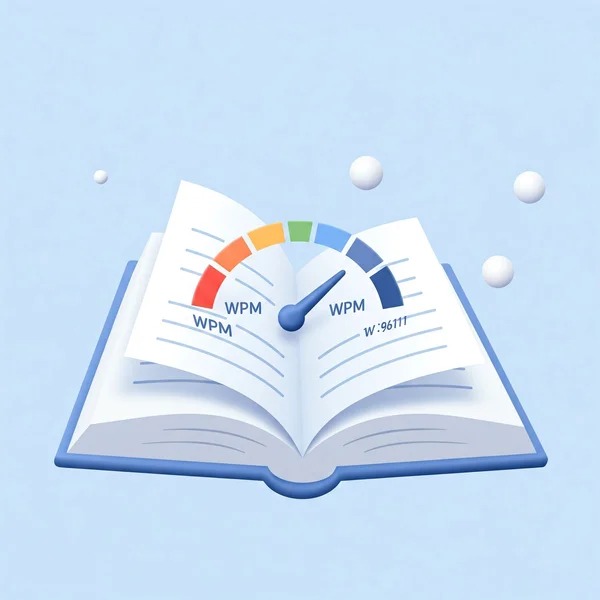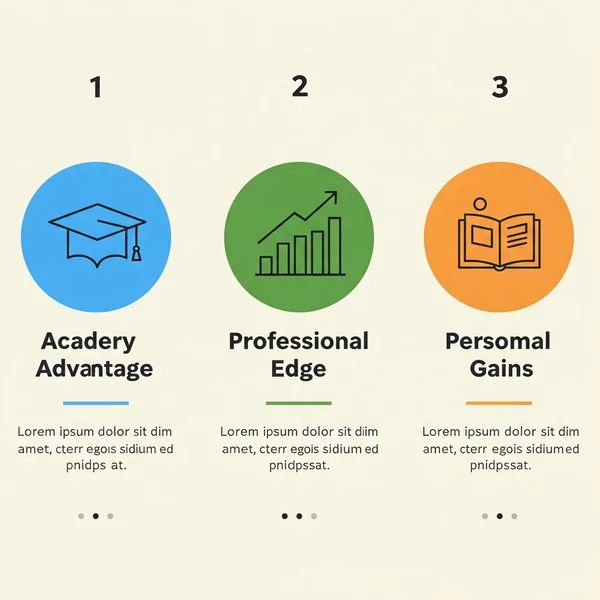What is Reading Speed & Why It Matters
In today's fast-paced world, we're constantly bombarded with information – emails, reports, articles, social media updates, and more. Being able to process this information quickly and effectively is a crucial skill. But have you ever stopped to think about how fast you actually read? What is reading speed, and does it really impact your daily life? Understanding your Words Per Minute (WPM) is the first step towards boosting your reading efficiency. If you're curious about where you stand, you can always find out your current reading speed.
Defining Reading Speed: What Exactly is WPM?
Let's break down this fundamental concept. What does WPM truly signify when we talk about reading?

The Meaning of "Words Per Minute"
WPM stands for Words Per Minute. It's the standard metric used to measure how many words a person can read in a single minute. Think of it like measuring driving speed in miles per hour (MPH) or kilometers per hour (KPH); WPM provides a quantifiable measure of your reading pace. It gives you a concrete number to understand how quickly you process text.
How WPM Quantifies Reading Rate
Essentially, WPM provides a benchmark for your reading rate. By calculating how many words you read over a specific time (usually one minute), we get a score that reflects your processing speed for written material. This isn't just about seeing words; it's about how quickly your brain can recognize and initially process them as you move through a text.
How is Reading Speed Measured? The Basics
Now that we know what WPM is, the next logical question is: how is reading speed measured? The fundamental principle is quite straightforward.
The Simple Formula: Words Divided by Time
At its core, calculating WPM involves a simple formula:
Total Words Read / Time Taken (in minutes) = Words Per Minute (WPM)
For instance, if you read a passage of 500 words in 2 minutes, your reading speed would be 500 / 2 = 250 WPM. Online tools often use timers and pre-counted texts to make this calculation accurate and effortless.
Why Standardized Measurement is Important
Using a consistent method to measure reading speed is vital for obtaining reliable results. Standardized tests, like the one offered at readingspeedtest.net, use controlled texts and accurate timing mechanisms. This ensures that you get a dependable WPM score that you can use to track your progress over time or compare against general benchmarks, rather than relying on rough estimates. Consistent measurement is key to understanding your actual reading capabilities.
Why Your Reading Speed Matters
Okay, you can measure your WPM. But why does reading speed matter? Does reading faster automatically mean reading better? While speed isn't everything (comprehension is crucial too!), improving your reading speed offers significant advantages in various aspects of life. Understanding these benefits can motivate you to assess your own reading efficiency.

Academic Advantage: Learn Faster and More Effectively
For students, reading is a cornerstone of learning. From textbooks and research papers to lecture notes and online resources, the volume of required reading can be immense. A higher WPM allows students to cover more material in less time, making study sessions more productive. It frees up valuable time for revision, critical thinking, and other academic pursuits, enhancing overall reading skills for better academic performance.
Professional Edge: Process Information Quickly at Work
In the professional world, time is often money. Professionals need to stay updated on industry trends, read reports, analyze documents, and sift through countless emails daily. Faster information processing through improved reading speed means quicker decision-making, enhanced productivity, and the ability to stay ahead of the curve. Efficient reading can significantly reduce time spent on routine tasks, allowing more focus on strategic initiatives.
Personal Gains: Save Time and Enjoy Reading More
Beyond academics and work, think about your personal reading – news articles, blogs, novels. A comfortable reading speed allows you to consume more content you enjoy or need to know, without it feeling like a chore. Whether it's learning a new hobby, staying informed about current events, or simply getting lost in a good book, better reading efficiency can enrich your personal life and save you precious time.
What Influences Your Words Per Minute?
Your reading speed isn't set in stone; various factors can affect how quickly you read at any given moment. What influences reading speed? Understanding these factors can help you interpret your WPM score more accurately.
Text Difficulty and Familiarity
Unsurprisingly, reading a complex scientific paper will likely be slower than reading a simple novel or a topic you're already very familiar with. The complexity of the language, sentence structure, and subject matter significantly impacts your reading pace.
Your Vocabulary and Background Knowledge
A wider vocabulary means you'll encounter fewer unfamiliar words that slow you down. Similarly, having prior knowledge about the topic allows your brain to process the information more quickly and efficiently. Building vocabulary is a key component of improving overall reading ability.
Reading Purpose (Skimming vs. In-depth Study)
Are you quickly skimming a news article for the main points, or are you carefully studying a textbook for an exam? Your reading purpose dictates your speed. Skimming for gist is naturally faster than reading for deep understanding and retention. Knowing why you are reading helps adjust your reading rate appropriately.
Speed vs. Comprehension: A Quick Look
It's crucial to touch upon the relationship between reading speed and reading comprehension. While this article focuses on WPM, speed alone is only half the story.
Finding the Sweet Spot Between Fast and Understood
The ultimate goal isn't just to read fast, but to read efficiently – achieving a good speed while understanding and remembering what you read. Reading too quickly can sometimes lead to poor comprehension. Finding the right balance is key. A good reading speed test often includes comprehension questions to ensure you're not just scanning words but actually processing their meaning.
Know Your Speed, Boost Your Reading Power
Understanding what reading speed (WPM) is and why it matters is the essential first step toward becoming a more effective and efficient reader. It impacts your success in studies, your productivity at work, and even your enjoyment of reading for pleasure. Knowing your baseline WPM provides valuable insight into your current abilities.
Discover Your Baseline WPM
Are you curious about your own reading speed? Don't guess – get an accurate measurement! Knowing your starting point is crucial for setting improvement goals.

Call to Action
Ready to uncover your reading potential? Take our free reading speed test! Find out your WPM and comprehension level in just a few minutes. What's your current reading speed? Share your results or thoughts in the comments below!
Your Reading Speed Questions Answered
Here are answers to some common questions about reading speed:
What is considered an average WPM for adults?
Most adults read at an average speed of 200-300 WPM. However, this can vary significantly based on education level, reading habits, and the type of text being read. College students, for example, might average closer to 300 WPM.
Is faster reading speed always the goal?
Not necessarily. While faster reading is often beneficial, the primary goal should be efficient reading – balancing speed with good reading comprehension. Reading technical material very fast without understanding it is counterproductive. It's about finding the optimal speed for the specific text and your purpose.
Where can I reliably check my reading speed online?
There are various online tools available. For a reliable assessment that often includes comprehension checks, consider using a dedicated platform. You can easily test your reading speed on our website to get an accurate measure of your WPM and understanding.
Can reading speed be improved with practice?
Absolutely! Like any skill, reading speed and efficiency can be improved with conscious effort and practice. Techniques like reducing subvocalization, widening your eye span, and simply reading more regularly can significantly boost your WPM over time. Consistent practice using tools like a reading speed test can help you track your progress.